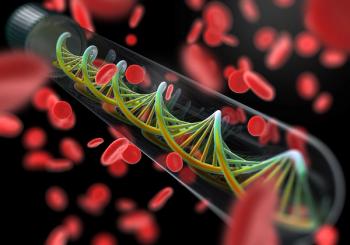
Oncology NEWS International
- Oncology NEWS International Vol 9 No 7
- Volume 9
- Issue 7
Study Confirms Efficacy of Concurrent Radiotherapy and Paclitaxel for NSCLC
BOSTON-A regimen of concurrent radiation and weekly administration of paclitaxel (Taxol)/carboplatin (Paraplatin), the most commonly used treatment for nonresectable non–small-cell lung cancer (NSCLC), was evaluated in a national cooperative group trial and shown to be effective.
BOSTONA regimen of concurrent radiation and weekly administration of paclitaxel (Taxol)/carboplatin (Paraplatin), the most commonly used treatment for nonresectable nonsmall-cell lung cancer (NSCLC), was evaluated in a national cooperative group trial and shown to be effective.
As was reported at the ASCO meeting, Cancer and Leukemia Group B (CALGB) study 9534 evaluated the use of this regimen after induction chemotherapy with paclitaxel plus carboplatin.
An earlier series of similar studies conducted at Brown University showed this regimen to be effective. Investigators sought to determine if this approach could be conducted by a cooperative group, to validate the regimens feasibility and activity in NSCLC.
The study was a success in the sense that CALGB 9534 accomplished its planned objectives, noted Wallace Akerley, MD, chief of oncology at Boston University Medical Center, and formerly of Brown University Oncology Group. Even though cooperative studies often include less healthy patients, the results were exactly the same as in the Brown series.
Encouraging Survival Curve
Forty-one patients with stage IIIA and IIIB NSCLC received two cycles of induction chemotherapy with paclitaxel 200 mg/m² and carboplatin AUC 6 every 3 weeks. Concurrent chemoradiation consisting of weekly paclitaxel (50 mg/m² over 1 hour), weekly carboplatin (AUC 2), and thoracic radiation (2 Gy/day for a total of 66 Gy) was given over 7 weeks.
The response rate for the induction phase was 24% (all partial responses) and the induction/ concurrent phase response rate was 56% (including 7% complete responses).
Median survival was 14 months, and failure-free survival was 7.7 months. The 1-year and 2-year survival estimates were 56% and 43%, respectively, he reported.
Dr. Akerley was very encouraged by the survival curve, but noted that a wide margin of error exists. Two-year survivals historically average about 20% to 30%, he said, and we are in the 40% range here. Since the goal of combined-modality therapy is cure, these long-term survival estimates are of greater significance.
Modest Toxicity
Equally important, the regimen produced modest toxicities compared to older regimens, Dr. Akerley noted. Of particular significance was the lack of grade 4 vomiting. The major toxicity, primarily grade 3-4 esophagitis, which occurred in 35% of patients during the concurrent phase, certainly will decrease to less than 20% when translated into the new common toxicity criteria.
In addition, grade 3-4 neutropenia developed in 34% of patients. Grade 3-4 pulmonary toxicity was observed in one patient, but three patients developed grade 3 infections.
As a result of the CALGB 9534 findings, induction chemotherapy followed by concurrent chemoradiation will be compared to concurrent chemoradiation alone in the ongoing CALGB 39801, a phase III trial that has already enrolled more than 100 patients.
Articles in this issue
over 25 years ago
Couric Urges Doctors to Talk to Patients About Colon Cancerover 25 years ago
Automated Imaging Notification System Close to Fail-Safeover 25 years ago
Higher Dairy Consumption Linked to Prostate Cancer Riskover 25 years ago
First-Year Funding of Early Detection Research Network Completeover 25 years ago
Gritty Antitobacco Ads and More From Legacy Foundationover 25 years ago
Tositumomab Effective for Low-Grade Follicular Lymphomaover 25 years ago
New Awards Spotlight Courage of Cancer Survivorsover 25 years ago
Hospital Volume Shown to Predict Breast Cancer Outcomeover 25 years ago
New Drug Information Websiteover 25 years ago
NCCN Presents Updated Colorectal Cancer GuidelinesNewsletter
Stay up to date on recent advances in the multidisciplinary approach to cancer.















































































